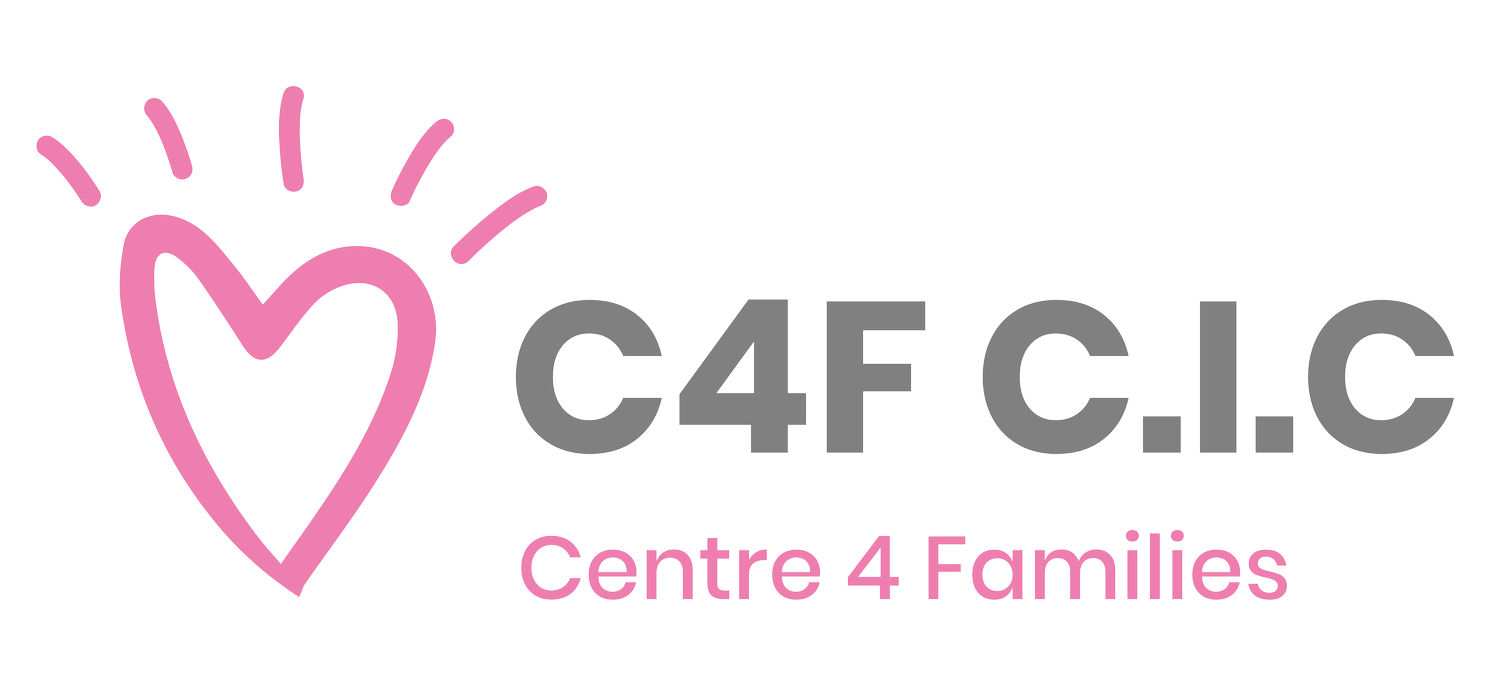Domestic Abuse & Coercion Policy
C4F Child Contact Centre believes that everyone has the right to live safely and without the fear of violence and cruelty. It also recognises that domestic violence is unacceptable and:
Occurs throughout society irrespective of class, income, race, culture, religion, gender or sexuality.
Can be psychological, physical, sexual or emotional.
Is rarely a one off incident and usually takes the form of a pattern of abusive and controlling behaviour that allows the abuser to seek and maintain power and control over one or more members of their family and sometimes others.
Can have a far-reaching effect and impact upon others and especially children.
C4F Child Contact Centre believes that every child has the right to grow and develop in an environment free of domestic violence, whether directly as a victim or indirectly as a witness of violence in its home or community.
C4F Child Contact Centre accepts that some families using its services will have experienced varying levels of domestic violence. It will therefore ensure that these families receive a service that is sensitive, meets their needs and does everything possible to protect them from further harm. This will be achieved by adherence to the following:
The Referral Process
The centre’s Referral Form will have been completed in full.
A comprehensive Risk Assessment will have been completed covering:
The nature and extent of any violence.
The involvement of any other statutory or voluntary agencies with the victim, perpetrator or any other members of the family.
How any violence has affected adults and or children both inside and outside of the immediate family?
How any contact is going to be managed in a way that takes account of people’s wishes and feelings and reduces the risk of further harm?
Working with the Family
Once a family has been accepted provision will be made for:
The Contact Plan or Contract to make reference to how any ongoing risks presented by domestic violence will be assessed, managed and reviewed.
An independent interpreter to be available when a family's first language is not English.
Parents to visit the centre separately before any contact commences
Parents to be given clear instructions in writing about the times they should arrive and the entrance to the centre they should use.
Parents to wait in a separate and secure rooms
Resident parents to explore the possibility of someone other than themselves or their new partner bringing the children to the centre if it is safer and more appropriate.
Any distress to children or adults brought about by bullying or pressure to disclose information to be dealt with promptly and firmly
Contact to be terminated immediately if it is felt that anyone involved is or could be at significant risk of harm
The police to be called if a member of staff feels that anyone is at immediate risk of harm and the situation cannot be defused.
Use of the centre is denied to any individual or family where it is felt that their presence is likely to present a threat to the wellbeing of other centre users and or staff.
One parent waits at the end of contact until the other has left the centre and the area immediately around it.
The addresses, telephone numbers and other sensitive information relating to the family to always remain strictly confidential.
Centre Staffing
C4F Child Contact Centre will ensure that:
There will be a minimum of three members of staff when the centre is open.
Staff will be made aware of the circumstances and needs of families using the centre.
A telephone is always available
Staff are aware of and follow an agreed procedure in the event of a violent incident or an emergency.
Staff Training
C4F Child Contact Centre will ensure that its staff
Are aware of and operate in accordance with its policy in relation to domestic Violence.
Receive regular training in issues relating to domestic violence.
Are familiar with the patterns of domestic violence in relation to the perpetrator and the victim.
Acquire skills in conflict resolution and in defusing situations where anger is being displayed.
Have access to a recognised and easily accessible system/procedure to offer them support if they become involved in a stressful or violent incident.
Confidentiality
C4F Child Contact Centres will operate in accordance with Sections A- C of its Confidentiality policy in relation to:
a. Interagency Working
b. Safeguarding and Child Protection
c. Disclosing Information
Additional Issues
Referrers, and families using the centre will be made aware of its policy in relation to domestic violence.
Any individual or agency wishing to challenge how the centre implements its policy in relation to domestic violence should be referred to the centre's complaints procedure.
The centre’s policy in relation to domestic violence will be reviewed and if necessary updated annually.
Controlling or Coercive Behaviour
The Serious Crime Act 2015 (the 2015 Act) received royal assent on 3 March 2015. The Act creates a new offence of controlling or coercive behaviour in intimate or familial relationships (section 76). The new offence closes a gap in the law around patterns of controlling or coercive behaviour in an ongoing relationship between intimate partners or family members. The offence carries a maximum sentence of 5 years’ imprisonment, a fine or both.
This offence is constituted by behaviour on the part of the perpetrator which takes place “repeatedly or continuously”. The victim and alleged perpetrator must be “personally connected” at the time the behaviour takes place. The behaviour must have had a “serious effect” on the victim, meaning that it has caused the victim to fear violence will be used against them on “at least two occasions”, or it has had a “substantial adverse effect on the victims’ day to day activities”. The alleged perpetrator must have known that their behaviour would have a serious effect on the victim, or the behaviour must have been such that he or she “ought to have known” it would have that effect.
Controlling or coercive behaviour should be dealt with as part of the Child Contact Centres safeguarding and public protection procedures.
All Paid and Unpaid staff must have regular training in this area and covered the topic in their induction.
The types of behaviour associated with coercion or control may or may not constitute a criminal offence in their own right. It is important to remember that the presence of controlling or coercive behaviour does not mean that no other offence has been committed or cannot be charged. However, the perpetrator may limit space for action and exhibit a story of ownership and entitlement over the victim. Such behaviours might include:
a. isolating a person from their friends and family;
b. depriving them of their basic needs;
c. monitoring their time;
d. monitoring a person via online communication tools or using spyware;
e. taking control over aspects of their everyday life, such as where they can go, who they can see, what to wear and when they can sleep;
f.depriving them of access to support services, such as specialist support or medical services;
g. repeatedly putting them down such as telling them they are worthless;
h. enforcing rules and activity which humiliate, degrade or dehumanise the victim;
i. forcing the victim to take part in criminal activity such as shoplifting, neglect or abuse of children to encourage self-blame and prevent disclosure to authorities;
j. financial abuse including control of finances, such as only allowing a person a punitive allowance;
k. threats to hurt or kill;
l. threats to a child;
m. threats to reveal or publish private information (e.g. threatening to ‘out’ someone).
n. assault;
o. criminal damage (such as destruction of household goods);
p. rape;
q. preventing a person from having access to transport or from working.
This is not an exhaustive list

